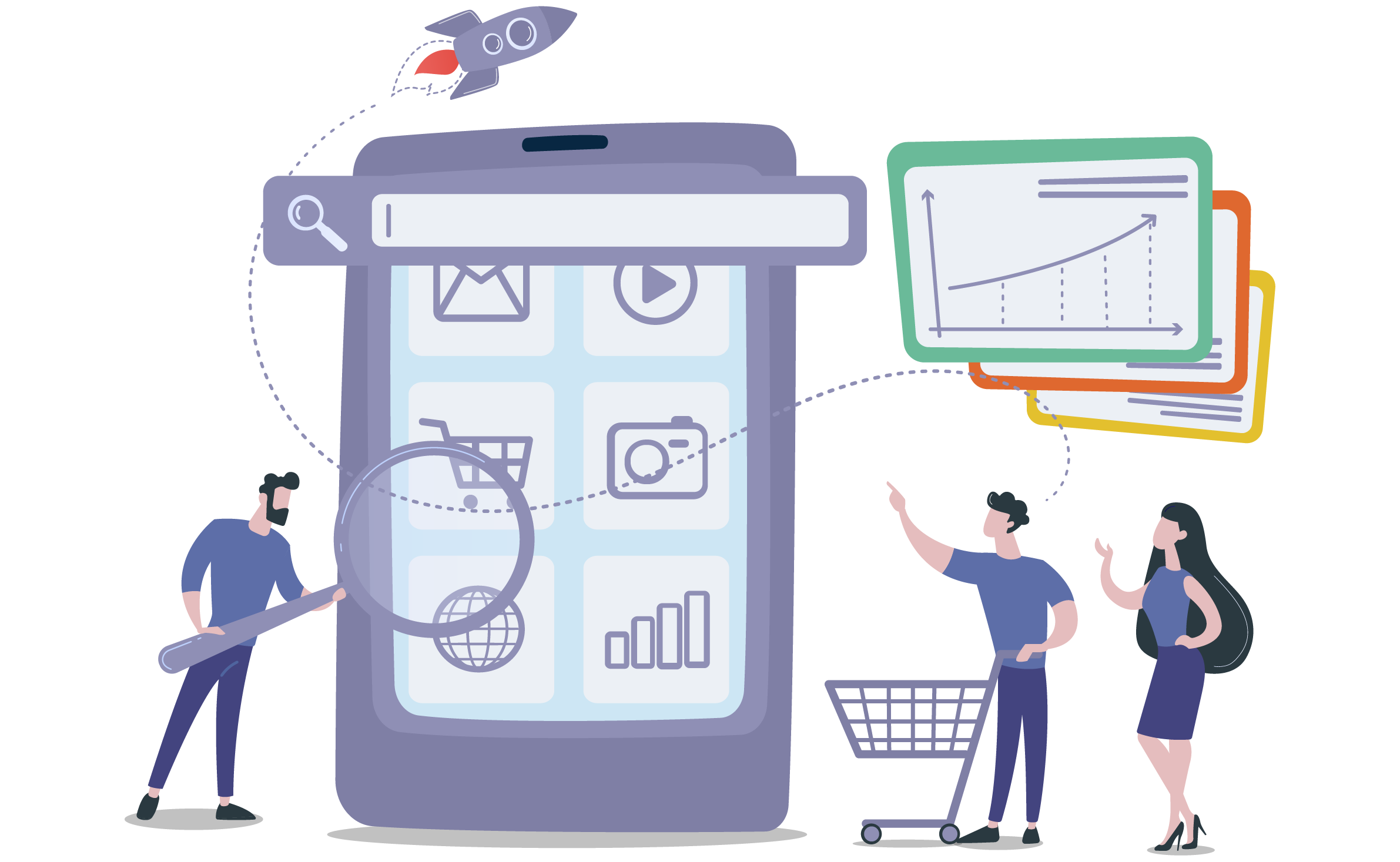The world’s dependency on online shopping has risen beyond leaps and bounds, along with the outburst and tireless forward voyage of technology. This new era of online shopping trends can be comprised under the term’ E-commerce.’ E-commerce or electronic commerce is the trading of services and products through the luxurious space of the internet. E-commerce businesses are growing daily with the advancement of emerging trends in e-commerce and mobile commerce, obviously evolving to an increasing competition front also. The transformation from desktop to mobile devices, changing customer patterns, vigorous innovations, etc., are driving the technological trends of E-commerce. Whatever the industry may be, the established ones or just start-ups, everybody is looking forward to increasing sales through enhanced customer experience. The necessity of businesses to engage more online has also recently been accelerated by the covid 19 pandemic.
Yet these enormous possibilities also raise the question of e-commerce security or, in other words, the protection of e-commerce assets from unauthorized access, alteration, use, or destruction. However, it is evident that, as the world has once been opened to the stunning advantages and amenities of e-commerce, there is no downfall awaiting it in the future. In other words, e-commerce will be consistent in the high gears only. Let’s have an expanded look into the recent trends in e-commerce and e-commerce technology trends.
Artificial Intelligence (AI)
The idea of personalized customer experience has been exposed to the rays of reality through the magnificent technologies of machine learning and artificial intelligence. We have excellent examples of AI applications, Alexa and Siri, utilized in innovative tools like smart speakers, voice assistants, chatbots, etc., to search and purchase products or services online. By collecting user data regarding a customer’s previous searches and purchases, AI can make personalized recommendations. This emerging e-commerce trend is all set to boost e-commerce businesses profoundly.
On-site Personalization
In this competitive business world, every firm looks forward to building a solid relationship with its customers and increasing revenue. With the help of AI-collected data on customer preferences, a personalized and seamless customer experience can be generated. This on-site personalization helps brands in boosting sales and profit. Based on various statistics, it can be observed that there has been considerable improvement in revenue generation for the industries that implement on-site personalization.
Mobile Shopping
People enjoy the convenience of making purchases from anywhere and at any time. Mobile commerce is making purchases through wireless-handheld devices like smartphones and tablets. Mobile shopping has enabled users to make purchases virtually according to their preferences with the benefit of paying digitally. Sooner than later, this recent trend in e-commerce is expected to surpass desktop shopping with its adequate SEO reach and amenity. Utilization of mobile devices in e-commerce can hasten on-page and local SEO, also resulting in high click-through rates.
Augmented Reality
With the unique technology of Augmented Reality (AR), customers get to see the 3-dimensional versions of the services and products they are interested in. Hence this technology does enhance the shopping experience. According to various studies, 3D virtual photography is about six times more cost-effective than traditional ways of photography. With augmented reality, customers can be exposed to try-before-you-buy and view-in-room experiences. In short, buyers can get a look and have a virtually real experience with the products or services without coming across them in person. Thereupon, AR can boost the growth of e-commerce handsomely to a great extent.
Social E-commerce
There is no need to mention how people are entangled with social media platforms in this world of technology domination. Social e-commerce does utilize the enormous possibilities of social media platforms for dragging people’s attention to boost engagement with customers and the shopping experience. With exclusive features like social media optimization, advertisements, user recommendations, online communities, review systems, user referrals, etc., social e-commerce can propel the whole e-commerce sphere forward considerably. Social networks are effective in bringing innovation to retail industries and building agile identities among customers. Social media users are likely to share the brands they feel helpful and engaged with on social media platforms which will enhance the efficiency of social media campaigns. This can captivate the attention of the users leading them to make purchases. This online shopping trend in e-commerce is a result-promising tactic to follow.
It can be concluded that e-commerce constantly evolves to new magnificent definitions with the support of more recent trends and technologies. As it upheaves the sales of businesses, e-commerce is concerned about e-commerce security also, providing a comfortable space for the customers.





 +91 8714 60 30 48
+91 8714 60 30 48
 + 971 44 92 87 30
+ 971 44 92 87 30




